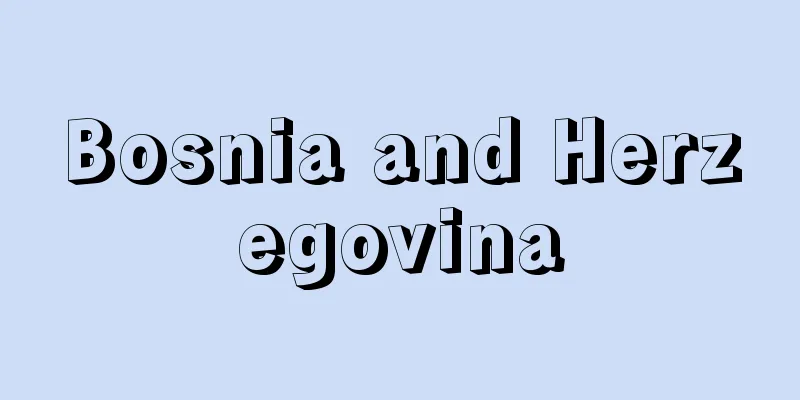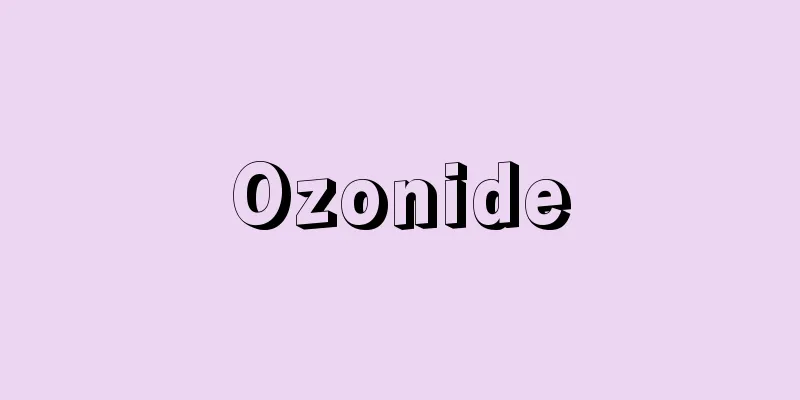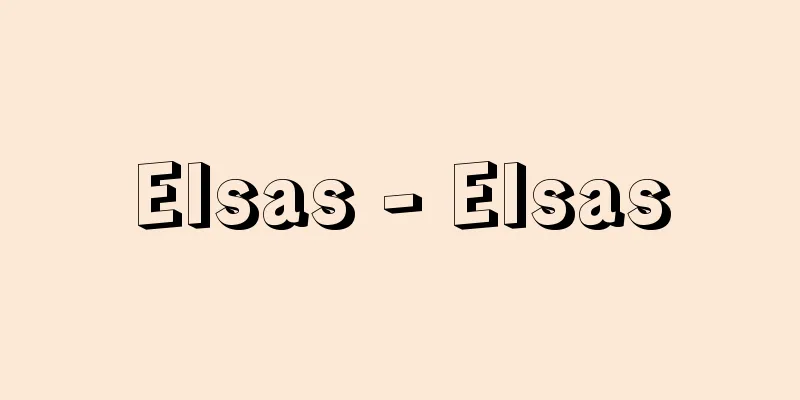Face

|
In vertebrates, the face refers to the front of the head, with the top and bottom referring to the area from the forehead to the lower jaw, and the left and right referring to the area between the two ears. In animals with small brains, the forehead is narrow, and the face of cats, dogs, and horses is mostly made up of the jaw. The skull is formed when the facial cranium, including the nasal bones, cheekbones, and jawbone, is added to the braincase, which encases the brain, but the facial cranium is formed from the gill bones found in fish. Changes in the gill bones that accompany evolution cause the faces of vertebrates to change in various ways. The face is home to sensory organs for sight, smell, hearing, and taste, which act as windows for taking in information from the outside world. Even in the case of invertebrates such as dragonflies, if there is a group of parts on the head that includes the eyes and mouth, this part is commonly called the face. [Seiichiro Kawashima] Human faceThe human face, also called the facial area, is the area bounded by a line that passes through the two eyebrows, the zygomatic arch, the external auditory opening, and the lower edge of the mandible. Anatomically, it is the skin that covers the facial skull (consisting of the palate, cheekbones, maxilla, mandible, and hyoid bones), and contains the eyes, nose, and mouth. The face can be divided into the orbital region, infraorbital region, nose, cheeks, cheekbones, mouth region (upper lip region, lower lip region), chin, and parotid region, but the term face generally includes the forehead. However, the hairline on the forehead is not suitable as a boundary because it varies greatly from person to person. There are grooves on the skin of the face that are common to everyone. These are the nasolabial groove that descends from the outside of the nasal ala between the cheek and upper lip, the mentolabial groove between the lower lip and chin, and the philtrum in the midline between the nose and upper lip. The upper lip is formed by fusing the left and right sides, and it is thought that the fusion line is on both sides of the philtrum in adults. The skin on the front of the eyeball is the upper and lower eyelids, and the joint between them is called the palpebral fissure. The skin of the eyelids is particularly thin. The skin of the eyelids is initially closed, but the palpebral fissure forms around the seventh month of fetal development and opens. The part of the nose that protrudes from the face is called the external nose, the blunt edge equivalent to the ridge is called the nasal dorsum, and the tip is called the nasal tip. The lips have the same structure as the skin, but the red part is weakly keratinized as an epidermis, and the lack of skin pigment allows the blood to be seen through, which is why it appears red. The skin on the face is covered with fine hairs, but eyebrows, eyelashes, whiskers, and nose hairs are all permanent hairs. The facial muscles consist of a group of facial muscles that create facial expressions, and a group of masticatory muscles that move the jaw; the former are controlled by the facial nerve, and the latter by motor nerves in the trigeminal nerve. When the facial nerve is paralyzed, the face loses its facial expression and becomes immobile, like a mask. The sensation of the skin on the face is received by the sensory nerves of the trigeminal nerve. [Kazuyo Shimai] The face from an evolutionary perspectiveThe human face is remarkably unique, despite sharing a common structure with vertebrates, especially mammals. The internal structure of the face consists of the anterior part of the braincase and the facial cranium. The hominization phenomenon is characterized by the development of the brain, especially the frontal lobe, which causes the forehead to swell, while the masticatory organs shrink and the facial cranium becomes smaller, and the jaw changes from prognathic to straight jaw. These changes can be observed not only in the evolution from monkeys to humans, but also at each stage of human evolution. Other characteristics of the human face include eyes aligned forward, a forward-protruding nose, reduced teeth, especially canines, a narrow cleft mouth, everted lips that expose the vermilion part, a wide forehead, and a prominent chin. The upper face becomes hairless, except for the eyebrows and eyelashes. The lower face also becomes hairless, but adult males often have beards or moustaches. Compared to men, women's faces are smaller and rounder, with smaller jawbones and noses, and they store more fat in their cheeks. In humans, facial muscles have developed and differentiated, making facial movements more complex, while facial hair has decreased, making facial expressions more easily observed by others. Facial muscles can be broadly divided into those that are centered around the eyes and those that are centered around the mouth. Facial expressions are closely linked to mental activity, and it is easy to infer a person's mental state from facial expressions. Furthermore, facial expressions, along with the language uttered by the mouth, function as a spokesperson and expression for the mind and personality, so the face is considered to be the part of the body that represents a person. Since there are significant individual differences in the eyes, nose, mouth, and facial contours, the face is also important as a part of personal identification. Not only individual differences, but also racial differences are evident in the face. Generally speaking, Caucasoids have small teeth and small jawbone alveolar regions, protruding noses, and variations in iris color. Negroids have somewhat larger teeth and jawbone, wider noses, and thicker lips. Mongoloid faces tend to be relatively flat, with narrow eyes, which is more pronounced in people living in the north, and is thought to be an adaptation to the cold climate. [Shise Kahara] "The Book of Faces" by Shise Kahara (1985, Kodansha) [References] | |Source: Shogakukan Encyclopedia Nipponica About Encyclopedia Nipponica Information | Legend |
|
脊椎(せきつい)動物における顔とは頭の正面のことで、上下は額から下あごまで、左右は両耳の間の部分をいう。脳の小さい動物では、額は狭く、ネコ、イヌ、ウマの顔は大部分があごでできている。 頭の骨は、脳を包む脳頭蓋(とうがい)に、鼻骨、頬骨(きょうこつ)、顎骨(がくこつ)などの顔面頭蓋が付加してできるが、顔面頭蓋は魚類にみられる鰓骨(さいこつ)がもとになってできたものである。進化に伴う鰓骨の変化によって脊椎動物の顔もさまざまに変化する。顔部には視覚、嗅覚(きゅうかく)、聴覚、味覚などの感覚器が外界から情報を取り入れる窓口として開いている。また、トンボのような無脊椎動物の場合にも、頭部に目、口などの集合した部分があれば、この部分を俗に顔という。 [川島誠一郎] ヒトの顔ヒトにおける顔は顔面ともいい、二つの眉(まゆ)を通り、頬骨弓から外耳孔を過ぎ、下顎骨の下縁を巡る線で囲まれた部分をいう。解剖学的には、顔面頭蓋(口蓋骨、頬骨、上顎骨、下顎骨、舌骨からなる)を覆う皮膚の部分で、目、鼻、口などがある。顔を区分すると、眼窩(がんか)部、眼窩下部、鼻部、頬部、頬骨部、口部(上口唇部、下口唇部)、おとがい(頤)部、耳下腺咬(じかせんこう)部になるが、一般に顔というと前頭部(額の部分)も含めて意味する場合が多い。しかし、額の頭髪の生え際は、個人差が甚だしいため境界としては適当でない。 顔面の皮膚には、だれにも共通して存在する溝がある。頬(ほお)と上口唇との間で、鼻翼の外側から下降する鼻唇溝、下口唇とおとがいとの間のおとがい唇溝、鼻と上口唇との間の正中部にある人中がこの溝である。上口唇は左右が癒合して生じ、その癒合線が成体では人中の両側にあたると考えられている。眼球の前面の皮膚は上下のまぶた(眼瞼(がんけん))で、その合わせ目を眼瞼裂とよぶ。眼瞼部の皮膚はとくに薄い。眼瞼の皮膚は初めは閉鎖しているが、胎生7か月ころに眼瞼裂ができて開く。顔面から突出している鼻の部分を外鼻といい、峰に相当する鈍縁を鼻背、先端を鼻尖(びせん)とよぶ。口唇は皮膚と同じ構造をしているが、赤色の部分は表皮としての角化が弱く、皮膚の色素が欠如しているため血液が透視され、赤色に見えるわけである。顔の皮膚にはうぶ毛(げ)があるが、まゆげ(眉毛(びもう))、まつげ(睫毛(しょうもう))、ひげ(須毛(しゅもう))、はなげ(鼻毛(びもう))などは終生毛である。顔の筋肉には、表情をつくる表情筋群と、下顎運動を行うそしゃく筋群とがあり、前者が顔面神経、後者が三叉(さんさ)神経のなかの運動神経の支配を受ける。顔面神経が麻痺(まひ)すると表情がなくなり、仮面のように動かなくなる。顔面の皮膚の感覚は三叉神経の感覚神経が受ける。 [嶋井和世] 進化からみた顔ヒトの顔は、脊椎動物とくに哺乳(ほにゅう)類と共通した構造をもつにもかかわらず、著しく独特である。顔面部の内部構造は脳頭蓋の前部と顔面頭蓋とからなるが、ヒト化現象の特徴として、脳とりわけ前頭葉が発達して額が大きく膨らむ一方、そしゃく器が退縮し顔面頭蓋が小さくなり、突顎(とつがく)から直顎へ移行することがあげられる。これらの変化はサルからヒトへの進化におけるばかりでなく、人類進化の各段階についても観察できる。そのほかのヒトの顔の特徴として、前向きに並んだ両眼、前方に突出した鼻、縮小した歯、とくに犬歯、幅の狭い口裂、翻転して紅唇部が露出した両唇、広い額、突出した頤(おとがい)などがあげられる。まゆげ、まつげを除き、上顔部には毛がなくなる。下顔部も毛がなくなるが、成人男性の場合、あごひげや、はなひげがみられることが多い。男性に比べ、女性の顔は小さく、丸みをもっており、顎骨や鼻が相対的に小さく、頬(ほお)内部に多くの脂肪を蓄える。 またヒトの場合、顔面筋が発達分化し、表情運動が複雑になる一方、顔面の毛が少なくなり、表情が相手によく観察されるようになった。顔面筋は大別して、眼中心および口中心に分布するものに分けることができる。表情は精神活動と密接に結び付いており、顔の表情から心的状態を容易に推察できる。さらに表情は、口から発する言語とともに、精神、人格の代弁者、表現者の機能をもつため、顔はその人物を代表する身体部分とみなされる。目、鼻、口や顔の輪郭なども個人差が顕著に出るため、顔は個人識別の部位としても重要である。 個人差ばかりでなく、人種差も顔に現れる。一般的にいって、コーカソイドは歯と顎骨歯槽(しそう)部が小さく、鼻が前突し、目の虹彩(こうさい)の色に変異がある。ネグロイドでは歯と顎骨がいくぶん大きく、鼻は幅広く、唇は厚い。モンゴロイドの顔は比較的平面的で、目が細いものが多いが、それは北方にいる人々ほど著しいため、寒冷適応したものと考えられている。 [香原志勢] 『香原志勢著『顔の本』(1985・講談社)』 [参照項目] | |出典 小学館 日本大百科全書(ニッポニカ)日本大百科全書(ニッポニカ)について 情報 | 凡例 |
Recommend
Acid and base - sanenki (English spelling)
The concepts of acids and bases have undergone man...
Eskimo-type kinship names - Eskimo-type kinship names
...That is, (1) Hawaiian-style kinship nomenclatu...
Hemerocallis aurantiaca (English spelling) Hemerocallisaurantiaca
… [Mitsuru Hotta]... *Some of the terminology tha...
Hypoconitine
…They are classified into three subgenera: Aconit...
Artemisia argyi (English spelling) Artemisiaargyi
…[Hiroshi Aramata]. … *Some of the terminology th...
Japanese maple - Japanese maple
→ Maple Source : Heibonsha Encyclopedia About MyPe...
Kardox - Kardox
...A pipe with an explosive membrane on one end i...
Tetraclita squamosa formosana (English spelling) Tetraclitasquamosaformosana
…[Shigeo Gamou]. … *Some of the terminology that ...
Pope - Houou
[1] (Noun) ① A Buddhist term. The king of the Dhar...
Mayflower Compact
Also known as the Mayflower Compact, it is a contr...
Cormack, AM
…It is also called a CT scan. CT was developed in...
Wooden stupa - Itatoba
A long, narrow board with Sanskrit characters, sut...
Paiwan
... There is much debate about the subdivision of...
Aelbert Cuyp
1620‐91 Dutch landscape painter. Born in Dordrecht...
Euler function - oiler function
…When m = 6, 1,5 is an irreducible coset. The fun...









